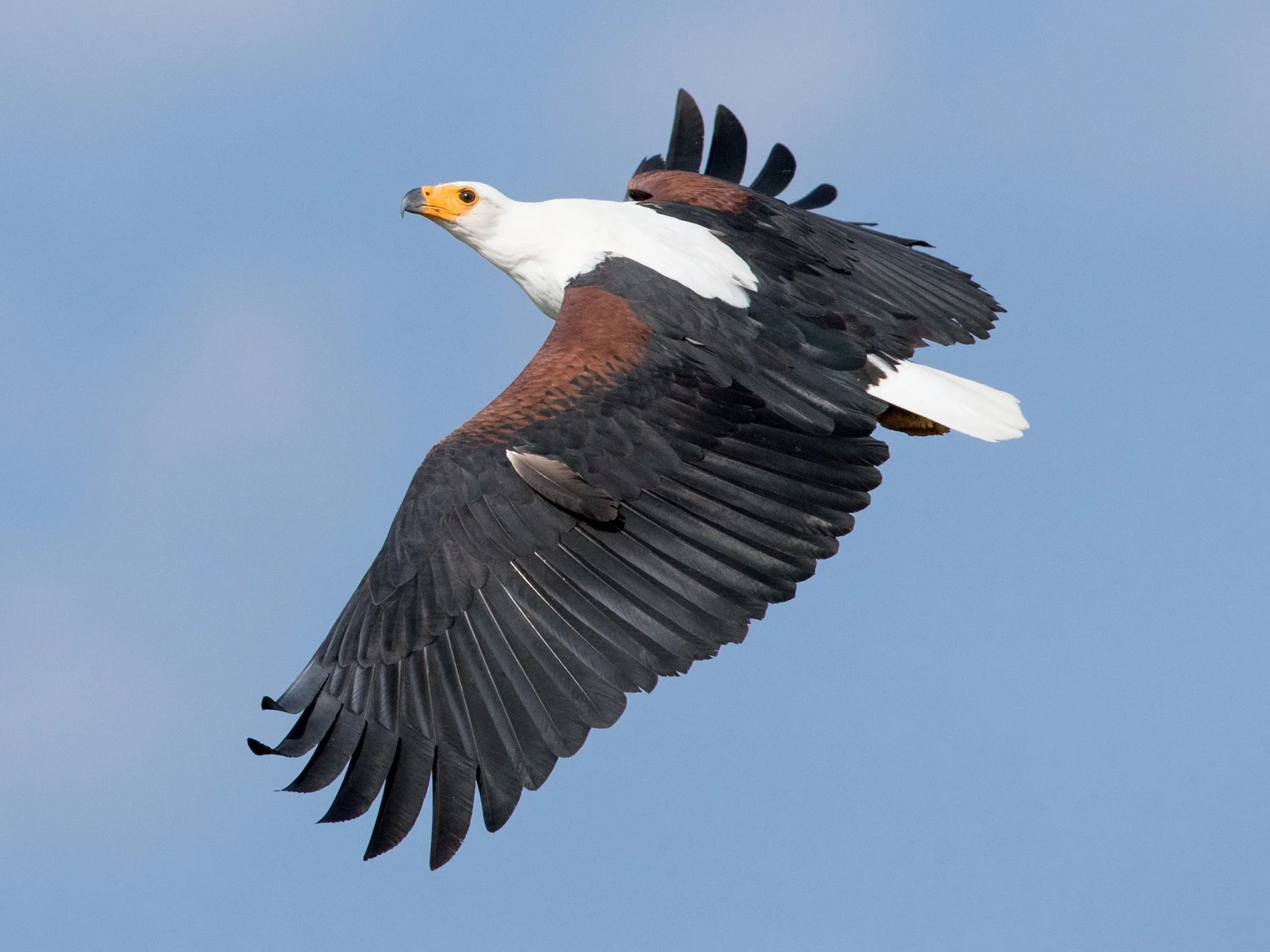National Birds of All Countries Check

National birds of a country symbolize what the country represents. They also add to the diversity of Avifauna and reflect the cultural heritage of that nation. Choosing a national bird is a crucial process since it becomes the country’s symbol. Birds are chosen depending on uniqueness, historical importance, and abundance. The country officials even create strict laws to protect their national birds and it is illegal to harm them in any sort of way.
Here we will take a look at different countries and learn about their national birds. This section is also important for students preparing for GK section of competitive exams.
1. India – Peacock
The Indian Peafowl, commonly known as the Indian peacock is a really colorful bird that is indigenous to India and synonymous with the identity of India. It is also found in various parts across the world. Peacocks are extraordinarily beautiful and are usually found in low-altitude regions and prefer to live near water bodies. They are distinct to Indian history and are often found in mythical stories and folklore.
2. Malaysia – Rhinoceros Hornbill
The Rhinoceros hornbill is one of the largest species of hornbill that reside in the rainforests of Asia. They nest in hollow cavities and live on treetops up to 70m in height. Hornbills can grow up to 50 inches and have shiny black feathers and white-colored tails. Their beak is bright orange and has a hollow horn-like structure called casque on the top of their beak. This is where the birds acquired their name from.
3. New Zealand – Kiwi
Kiwis are indigenous to New Zealand and are the smallest ratites including emus, ostriches, cassowaries, and rheas. They are brownish-grey in color and have a slightly long, narrow beak. Kiwis are flightless birds and are closely related to the extinct elephant birds. The name kiwi was conferred by the Australian soldiers during the first world war. Today, steps are taken for their protection as they are nearly extinct.
4. Denmark – Mute Swan
The mute swan was chosen as the national bird of Denmark, not because of national history but due to the popularity it gained after “The Ugly Duckling”. The mute swan acquired its name for being relatively quieter than other species of swan. Its body is pure white, with an orange beak and black border.
5. Iraq and Pakistan – Chukar
This gamebird is native to the middle east and southern Asia. They were named Chukar because of their chicken-like cackling sounds. They typically reside near mountains and rocky cliffs and usually feed on the ground. They are greyish brown in color with zebra-like lines down their wings and have an orange beak with a black border.
6. Canada – Canada Jay
Canada jay was selected as the national bird of Canada as it won the popular vote. They also go by the names camp robber, grey jay, and whisky jack. They are light grey in the front and dark grey in the back with a white head with a grey spot, black eyes, and a grey beak. They are characterized by their loud screaming and chattering calls.
7. Australia – Emu
The second-largest living bird right after the ostrich is a member of the ratite family. Emus are significant to the Australians as they appear in various cultural stories narrated by the indigenous communities. These large dark grey birds appear on Australia’s coat of arms and the 50-cent coins.
8. Germany – Golden Eagle
Being one of the most popular birds in the northern hemisphere, it symbolizes bravery, strength, and triumph. Eagles have been used as a symbol in Germany for many years. The golden eagle has a majestic appearance and is dark brown in color. Their wings can spread up to 7 feet. They have a golden color on their crown which explains their name.
9. Japan – Green Pheasant
In 1947, the green pheasant was declared the national bird of Japan, or kiji, as the Japanese people call it. They have been a significant part of cultural and mythical stories in Japan. The male has dark green feathers on the breast, a bluish hood, a pale grey tail, and red wattle. The females are not as brightly colored to stay safe while looking after the eggs.
10. United States – Bald Eagle
Since 1882, the bald eagle has been appearing in many official documents of the government. The most pictured bird in America even appears on flags and dollar bills. The bald eagle has a white head and tail with a dark brown plumage. It has a yellow beak and fierce yellow eyes. It can spread its wings up to 7 feet and has pretty sharp talons.
List of other countries and their national birds
| Country Name | National Bird |
| National bird of Zimbabwe | African fish eagle |
| National bird of Zambia | African fish eagle |
| National bird of Wales | Red Kite |
| National bird of Venezuela | Venezuelan troupial |
| National bird of Uruguay | Southern lapwing |
| National bird of United States | Bald eagle |
| National bird of United Kingdom | European robin |
| National bird of United Arab Emirates | Peregrine falcon |
| National bird of Ukraine | White stork |
| National bird of Uganda | East African crowned crane |
| National bird of Trinidad and Tobago | Scarlet ibis, Cocrico |
| National bird of Taiwan | Taiwan blue magpie |
| National bird of Thailand | Siamese fireback |
| National bird of Sweden | Common blackbird |
| National bird of Sri Lanka | Sri Lanka junglefowl |
| National bird of South Korea | Korean magpie |
| National bird of South Africa | Blue crane |
| National bird of Singapore | Crimson sunbird |
| National bird of Serbia | Golden eagle, Griffon vulture |
| National bird of Scotland | Golden eagle |
| National bird of Saint Vincent and the Grenadines | St Vincent parrot |
| National bird of Saint Lucia | Saint Lucia amazon |
| National bird of Saint Kitts and Nevis | Brown pelican |
| National bird of Saint Helena | Saint Helena plover |
| National bird of Puerto Rico | Puerto Rican spindalis |
| National bird of Poland | White-tailed eagle, White stork |
| National bird of Philippines | Philippine eagle |
| National bird of Peru | Andean cock-of-the-rock |
| National bird of Paraguay | Bare-throated bellbird |
| National bird of Papua New Guinea | Raggiana bird-of-paradise |
| National bird of Panama | Harpy eagle |
| National bird of Palestine | Palestine sunbird |
| National bird of Pakistan | Chukar partridge, Shaheen falcon |
| National bird of Norway | White-throated dipper |
| National bird of North Korea | Northern goshawk |
| National bird of Northern Ireland | Eurasian oystercatcher |
| National bird of Nigeria | Black crowned crane |
| National bird of Nicaragua | Turquoise-browed motmot |
| National bird of New Zealand | Kiwi |
| National bird of Netherlands | Black-tailed godwit |
| National bird of Nepal | Himalayan monal |
| National bird of Namibia | African fish eagle |
| National bird of Myanmar | Grey peacock-pheasant |
| National bird of Montserrat | Montserrat oriole |
| National bird of Mongolia | Saker falcon |
| National bird of Mexico | Golden eagle |
| National bird of Malta | Blue rock thrush |
| National bird of Malaysia | Rhinoceros hornbill |
| National bird of Luxembourg | Goldcrest |
| National bird of Lithuania | White stork |
| National bird of Liberia | Garden bulbul |
| National bird of Latvia | White wagtail |
| National bird of Kenya | Lilac-breasted roller |
| National bird of Jordan | Sinai rosefinch |
| National bird of Japan | Green pheasant |
| National bird of Jamaica | Doctor bird |
| National bird of Italy | Italian sparrow |
| National bird of Israel | Hoopoe |
| National bird of Ireland | Northern lapwing |
| National bird of Iran | Common nightingale |
| National bird of India | Indian peacock |
| National bird of Iceland | Gyrfalcon |
| National bird of Hungary | Saker falcon |
| National bird of Honduras | Scarlet macaw |
| National bird of Haiti | Hispaniolan trogon |
| National bird of Guyana | Hoatzin |
| National bird of Guatemala | Resplendent quetzal |
| National bird of Grenada | Grenada dove |
| National bird of Gibraltar | Barbary partridge |
| National bird of Germany | Golden eagle |
| National bird of France | Gallic rooster |
| National bird of Finland | Whooper swan |
| National bird of Faroe Islands | Eurasian oystercatcher |
| National bird of Eswatini | Purple-crested turaco |
| National bird of Estonia | Barn swallow |
| National bird of El Salvador | Turquoise-browed motmot |
| National bird of Ecuador | Andean condor |
| National bird of Dominican Republic | Palmchat |
| National bird of Dominica | Imperial amazon |
| National bird of Denmark | Eurasian skylark, Mute swan |
| National bird of Czech Republic | Common kingfisher |
| National bird of Cuba | Cuban trogon |
| National bird of Croatia | Common nightingale |
| National bird of Costa Rica | Clay-colored thrush |
| National bird of Colombia | Andean condor |
| National bird of China | Red-crowned crane |
| National bird of Chile | Andean condor |
| National bird of Cayman Islands | Grand Cayman parrot |
| National bird of Canada | Canada jay |
| National bird of Cambodia | Giant ibis |
| National bird of British Virgin Islands | Mourning dove |
| National bird of Brazil | Rufous-bellied thrush |
| National bird of Botswana | Kori bustard |
| National bird of Bolivia | Andean condor |
| National bird of Bhutan | Common raven |
| National bird of Bermuda | Bermuda petrel |
| National bird of Belize | Keel-billed toucan |
| National bird of Belgium | Common kestrel |
| National bird of Belarus | White stork |
| National bird of Bangladesh | Oriental magpie-robin |
| National bird of Bahrain | White-eared bulbul |
| National bird of Bahamas | Flamingo |
| National bird of Austria | Barn swallow |
| National bird of Australia | Emu |
| National bird of Aruba | “Shoco” (Burrowing Owl)., “Prikichi” (Brown-throated Parakeet) |
| National bird of Argentina | Rufous hornero |
| National bird of Antigua and Barbuda | Magnificent frigatebird |
| National bird of Anguilla | Zenaida dove |
| National bird of Angola | Red-crested turaco |
| National bird of Albania | Golden eagle |



